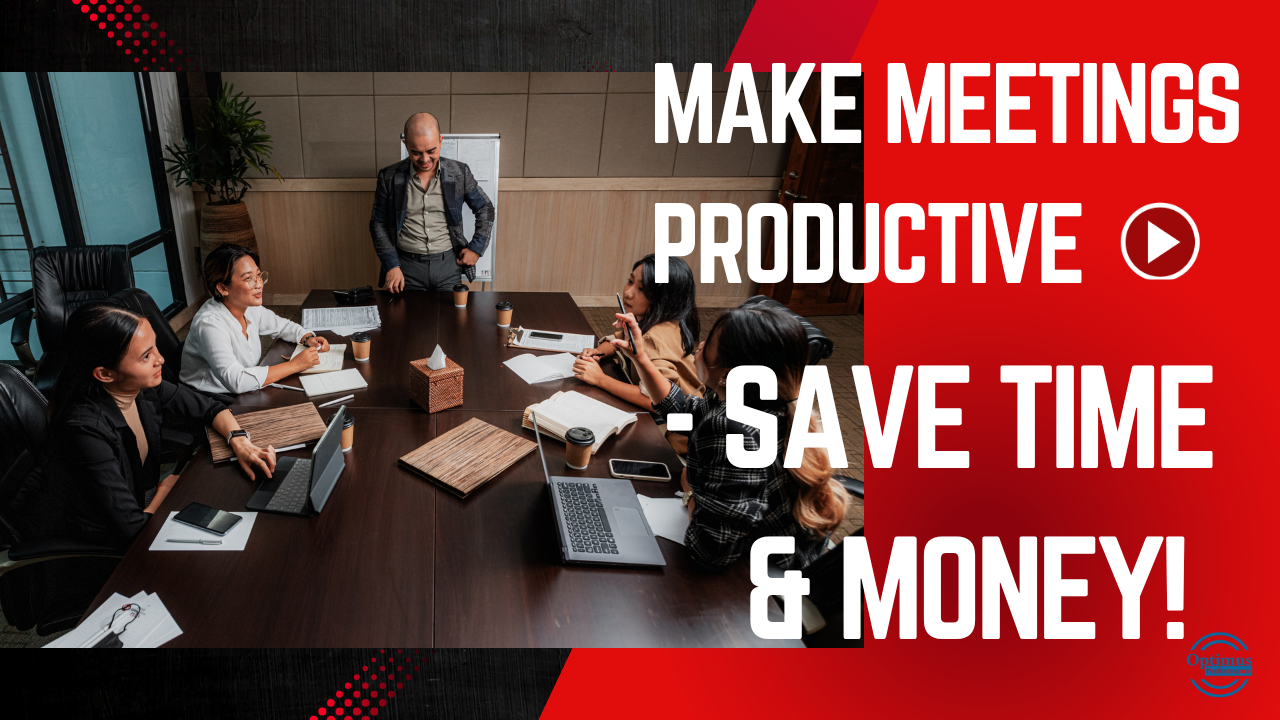How to Make Meetings More Productive and Stop Wasting Time
Managers and employees alike often express frustration over meetings that feel unproductive. If you’ve ever sat in a meeting wondering, What’s the point?, you’re not alone. In fact, studies show that half of all meetings waste time, and the average manager or employee spends 31 hours per month in meetings—half of which add little to no value. That’s a serious drain on your company’s time, energy, and resources.
But don’t worry! In this article, we’ll cover practical steps to turn meetings from time-wasters into efficient, goal-oriented discussions.
The Cost of Unproductive Meetings
If meetings aren’t productive, they become expensive. To put this into perspective, think about the hourly salaries of every attendee in the room. When a meeting stretches on unnecessarily—or worse, lacks purpose—you’re pouring valuable company money down the drain.
I recently attended an online meeting where there were too many people, no clear agenda, and no structure. It was supposed to be an hour long, but dragged on past an hour and a half, accomplishing little. At that point, I chose to step away from the project entirely.
Let’s explore what went wrong—and more importantly, how to fix it.
Steps to Make Meetings More Effective
1. Always Have an Agenda (download my free meeting planner template in Excel format)
The absence of an agenda leads to chaos and wasted time. A well-crafted agenda should clearly outline:
- Meeting purpose: Why are we here?
- Goals: What do we need to accomplish?
- Participants: Who needs to be here? (Avoid including people who won’t actively contribute.)
2. Assign a Gatekeeper
Meetings can easily derail when discussions go off-topic. A gatekeeper ensures the meeting stays on track by:
- Managing the timing of agenda items
- Politely steering conversations back to the relevant subject
- Preventing unnecessary tangents
This role can be filled by the chairperson, but having a dedicated gatekeeper makes it even easier to maintain focus.
3. Designate a Note Keeper
A surprising number of meetings lack proper notetaking, leading to no clear action items afterward. Without notes, attendees leave without knowing what they need to do next—which can lead to even more meetings!
Fortunately, AI-powered note-taking tools can help streamline this process. I use Fathom, an AI tool that automatically joins Zoom meetings, summarizes discussions, and creates action steps. If you want to improve meeting efficiency, consider adopting an AI note-taker.
If the meeting is in-person, assign someone to be the notetaker.
Lessons from Shopify: Reducing Meeting Waste
Shopify is a prime example of a company that drastically cut down on unproductive meetings. Here’s what they did:
- Eliminated Recurring Meetings
In early 2023, Shopify removed all recurring meetings with three or more people and reinstated No-Meeting Wednesdays. This eliminated 12,000 events, saving an estimated 36 years of meeting time!
2. Implemented a Meeting Cost Calculator
Shopify introduced a tool that calculates the true cost of a meeting based on:
- Attendee count
- Meeting duration
- Salaries
A simple 30-minute meeting could cost a company anywhere between $700 to $1,600. This makes people think twice before scheduling unnecessary discussions.
3. Encouraged a “Controlled Chaos” Approach
Shopify’s leadership challenged teams to reassess whether meetings were truly necessary. After a two-week trial, only essential meetings were reinstated.
Three Questions to Evaluate Your Meetings
Here are three questions to ask at the end of a meeting to gauge how successful it was:
- Did we achieve our goal?
- Did the meeting start and end on time?
- How satisfied were the participants with the outcome?
If your answers don’t indicate efficiency, it’s time to adjust your approach.
Free Download: Meeting Agenda Template
To help you streamline your meetiAngs, I’ve created a free agenda template you can download.
If you found this guide helpful, be sure to subscribe to my YouTube channel and turn on notifications for more leadership and productivity tips.
Here’s to more effective meetings—and less wasted time!
